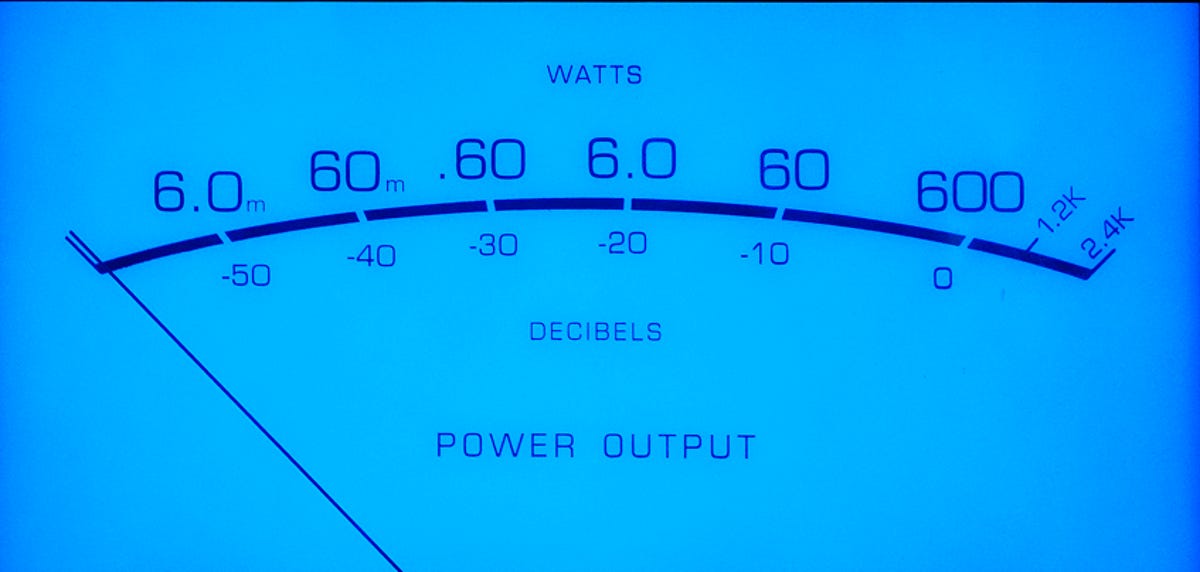
Steve Guttenberg/CNET
Amplifier power is one of the most misunderstood questions facing audio consumers. That is, how many watts do we need? The short answer is, if you crave high volume, have wild parties or a huge room, the more, the merrier. Before we go any further, let’s be clear on what amplifier power provides: it defines the upper limit of how loud your speakers can play without distorting. So if loudness is a big priority, buy as much power and the biggest speakers you can afford; if you listen at fairly moderate volume, don’t worry about your receiver or amplifier’s power rating. For most people, 50 watts will be more than enough, and Denon’s least expensive receiver, the AVR-1513, is rated at 110 watts per channel. Watts come cheaply nowadays; sound quality can get expensive.
A few weeks ago while visiting an audiophile friend with very efficient Zu SuperFly speakers, I listened to his 2 x 5-watt Almarro A205A amplifier. He played a bunch of bass-heavy dub reggae LPs, and the sound was truly spectacular. Volume capability was healthy, but his room was pretty small, maybe 12 by 16 feet. At home I heard the best sound ever from my Zu Druid V speakers with Woo Audio 234 Mono amps, they deliver 8 watts per channel. Those speakers are extremely sensitive, they’re rated at 101dB @ 2.83V, so they can play stupid-loud with a handful of watts.


Klipsch
Klipsch offers a wide range of highly sensitive speakers that can make a big sound with 10 or 20 watts, and its RB-41 II bookshelf speakers are downright affordable. Their sensitivity rating is 91dB @ 2.83V, but if your speakers are rated at less than 86 dB @ 2.83V (the lower the first number, the more power the speakers need), buy the most powerful amp you can afford. If you’re unsure about how much or little power your speakers need, check with the manufacturer. Power handling specifications, meaning how much power is safe to use with a speaker are a completely different issue, unrelated to speaker sensitivity.




